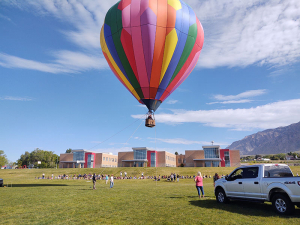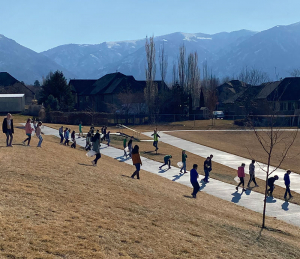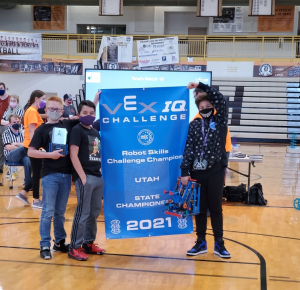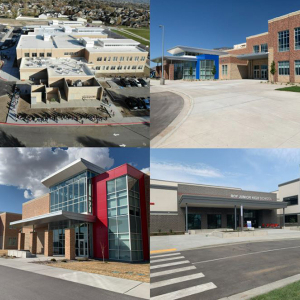Super User
Summer Math Resources
SuperIntendent's Summer Math Fluency Program
Math Fluency Practice Ideas
Kindergarteners- going into 1st Grade
Goals: Fluently add and subtract within 5, add and subtract within 10, count as many as 20 “items”, count to 100 by 1’s & 10’s
- Give child anything to count: cheerios, Barbie shoes, lego’s,…; “show me 6 Skittles” “show me 9 cheerios”
- Roll a dice- child counts and then recognizes how many dots are showing on the dice
- Roll a dice- child counts the number and then lays out that many items
- War with cards: play with a partner- each person turns over a card- whoever has the greater number wins, tomorrow it might be whoever has the smaller number wins
- War with dice: roll a dice- larger number wins- or smaller wins. “5 is greater than 1” etc. More advanced students can roll 2 dice and add them- and play War with the sums.
- Dominos- practice counting the dots
Possible websites:
- www.fun4thebrain.com/
- http://www.coolmath-games.com/1-number-games-addition-subtraction.html
- www.mathplayground.com
- http://www.learninggamesforkids.com/math_multiplication_games.html
- http://www.primarygames.com/math.php#
iPad Apps:
- Tallytots
- Subitize Tree
- Motion Math: Hungry Fish
- Code Squad
- Math Zombies (easy setting)
- Mathtopia
- Numbers Logic Puzzle
- Make 10 +
Math Fluency Practice Ideas
1st Graders- going into 2nd Grade
Goals: Fluently add and subtract within 20, count to 120 (starting at any number)
- Roll a dice- child counts the number and then lays out that many items
- War with cards: play with a partner- each person turns over a card- whoever has the greater number wins, tomorrow it might be whoever has the smaller number wins
- War with dice: roll and add 2 dice- larger number wins- or smaller wins. “13 is greater than 9” etc. More advanced students roll 3 or more dice and add them- and play War with the sums.
- Dominos- practice adding the dots
- Roll a dice, add 10 to the roll (or whatever you wish to practice)
- Roll a dice, double whatever you roll
- Roll 2 dice- add the 2 together, or subtract the 2
- Play “Find another Name” ---Roll the dice and students give partners (or break aparts) to get that number e. I roll a 5, I give partners such as 3 + 2, my partner gives a different combination such as 4 +1. More advanced students could roll 2 dice and then give partners for the sum. (I roll 4 and 5: My sum is 9. I say 6 +3, my partner says 8 +1)
- Practice counting starting at random numbers under 100.
- The number is 10 (or 20, or 15) - Write down 10 different number sentences that equal the target number. Practice with picture representations. Do it with many different numbers. Encourage different solutions.
- Mystery number: Think of a number and describe it. I’m thinking of a number greater then- but less then, it’s odd, . . .
- Flashcards
Possible websites:
- www.fun4thebrain.com/
- http://www.coolmath-games.com/1-number-games-addition-subtraction.html
- www.mathplayground.com
- http://www.learninggamesforkids.com/math_multiplication_games.html
- http://www.primarygames.com/math.php#
- http://www.pedagonet.com/FastMath/mathfacts.html
- https://www.xtramath.org/
iPad apps:
- Subitize Tree
- Motion Math: Hungry Fish
- Math Zombies
- Sushi Monster
- Mathtopia
- Math Fluency Practice Ideas
- Numbers Logic Puzzle
- Make 10 +
Math Fluency Practice Ideas
2nd Graders- going into 3rd Grade
Goals: Fluently add and subtract within 20, add and subtract within 100, mentally add or subtract 10 or 100 to a given number, count by 5’s, 10’s, and 100’s.
- Roll a dice, add 10 or random number to whatever they roll
- Roll a dice, double (or triple) whatever you roll
- Roll a dice, double + 1, or 2 or 3. Or triple and add 1.
- Roll 2 dice- add the 2 together, or subtract the 2 (Or roll more dice and add them together)
- Roll a dice and count by 2’s, 3’s, 4’s, 5’s – the number of times of the dice roll.
- Roll a dice (or 2-4 and add) tell how many more to get to the benchmark of number of 10, then 20, then 30, etc.
- Play “Find another Name” --Roll 2, 3, or 4 dice and add to get sum. Students give partners (or break aparts) to get that number i.e. I roll a 5, 3 and 4. My sum is 12. I give partners such as 9 + 3, my partner gives a different combination such as 6 + 6.
- Roll 2 dice give all 4 fact family problems (I give 2 addition, partner gives 2 subtraction than switch places and partner rolls and gives 2 addition)
- Practice Count by’s: 2,4, 6, 8. . . or 5,10,15,. . .etc.
- Play War with either cards or dice – Roll 2 dice (or draw 2 cards) and add. Decide who wins that day, greater or less- children must justify their answer, 13 is greater than 9.
- The number is 10 (or 20, or 15) - Write down 10 different number sentences that equal 10. Do it with many different numbers. Encourage great thinking.
- Flashcards
Possible websites:
- Timez Attack at www.bigbrainz.com
- www.fun4thebrain.com/
- http://www.coolmath-games.com/1-number-games-addition-subtraction.html
- www.mathplayground.com
- http://www.learninggamesforkids.com/math_multiplication_games.html
- http://www.primarygames.com/math.php#
- http://www.pedagonet.com/FastMath/mathfacts.html
- https://www.xtramath.org/
iPad apps:
- Motion Math: Hungry Fish
- Motion Math: wings
- Math Zombies
- Sushi Monster
- Mathtopia
- Math Evolve
- Math Fluency Practice Ideas
- Numbers Logic Puzzle
- Make 10 +
Math Fluency Practice Ideas
3rd Graders- going into 4th Grade
Goals: Maintain fluency of all multiplication and division facts and all addition and subtraction facts.
- Roll a dice, double it (or triple, or quadruple it)
- Roll a dice- add 10 ( or 20, or 30 . . .) to whatever you roll
- Practice a specific set of facts by just multiplying whatever they roll by a certain number
- Practice partners to 100. 17’s partner is 83, 42’s partner is 58.
- Roll 2 dice and multiply them. Mentally figure out how many more to get to a benchmark number like 50 or 100.
- Roll 4 dice- add 2 of them and multiply it by the sum of the other 2, or roll 3 dice – add 2 of them and multiply that sum by the number on the other dice.
- Roll 2 dice give all 4 fact family problems (I give 2 addition, partner gives 2 subtraction than switch places and partner rolls and gives 2 addition, or practice multiplication and division)
- Play “Poison” Roll 6 dice- 1’s and 6’s are poison and are not counted. Add all the other dice together, roll all “unpoisoned” dice again and continue to get a cumulative sum. Continue rolling all dice until all dice have come up “poisoned”. Highest cumulative score wins. (Great game for all grades – just use less or more dice)
- Play War by multiplying or adding 2 or 3 or 4 dice rolls or cards. Highest answer wins.
- Multiplication Snap: Roll 2 dice, or turn over 2 cards. First person to say product wins.
- Krypto
Possible websites:
- Timez Attack at www.bigbrainz.com (free version is great)
- www.fun4thebrain.com/
- http://www.coolmath-games.com/1-number-games-addition-subtraction.html
- www.mathplayground.com
- http://www.learninggamesforkids.com/math_multiplication_games.html
- http://www.primarygames.com/math.php#
- http://www.pedagonet.com/FastMath/mathfacts.html
- https://www.xtramath.org/
iPad apps:
- Motion Math: Hungry Fish
- Operation Math
- Code Squad
- Math Zombies
- Sushi Monster
- Mathtopia
- Math Evolve
Math Fluency Practice Ideas
4th Graders- going into 5th Grade
Goals: Maintain fluency of all multiplication, division, addition and subtraction facts.
- Roll a dice- multiply by 10, 100, etc.
- Roll a dice- square the number or Practice a specific set of facts by just multiplying whatever they roll by a certain number
- Roll 2 dice- multiply them together and tell how many more to get to the benchmark of 50 or 100.
- Roll 4 dice- add 2 of them and multiply it by the sum of the other 2, or roll 3 dice – add 2 of them and multiply that sum by the number on the other dice.
- Roll 2 dice give all 4 fact family problems (practice multiplication and division)
- Multiplication Snap- 2 dice are rolled, or 2 cards turned over, 1st one to get the answer gets the point (more advanced students could make it 3 dice or cards)
- Play War by multiplying or adding 2 or 3 or 4 dice rolls or cards. Practice multiplying using partial products. e., 3 x 5 x 5 = 3 x 5 = 15 then 15 x 5 so 10 x 5 = 50 and 5 x 5 = 25 so 50 + 25 = 75.
- “A Round of Dice”- each player makes their own gameboard by writing numbers from 0 – 140. Counting by 10’s. They roll 2 dice and multiply then round the product to the nearest 10. The first player to cross off all of their numbers is the winner. (If a number has already been crossed off- play just continues to the next player)
- Play Fractionator (War with fractions). Each player rolls 2 dice. To form fractions, put the lower numbers in the numerator and higher number in denominator. Decide if larger or smaller fraction wins. Student must vocalize answer. 3/4 is greater than 1/6..
- Krypto
Possible websites:
- Timez Attack at www.bigbrainz.com (free version is great)
- www.fun4thebrain.com/
- http://www.coolmath-games.com/1-number-games-addition-subtraction.html
- www.mathplayground.com
- http://www.learninggamesforkids.com/math_multiplication_games.html
- http://www.primarygames.com/math.php#
- http://www.pedagonet.com/FastMath/mathfacts.html
- https://www.xtramath.org/
iPad apps:
- Operation Math
- Code Squad
- Math Zombies
- Sushi Monster
- Mathtopia
- Math Evolve
Math Fluency Practice Ideas
5th Graders- going into 6th Grade
Goals: Maintain fluency of all multiplication, division, addition and subtraction facts.
- Roll a dice- multiply by 10, 100, etc.
- Roll a dice- square the number, or practice a specific set of facts by just multiplying whatever they roll by a certain number
- Roll 2 dice- multiply them together and tell how many more to get to the benchmark of 50 or 100.
- Roll 4 dice- add 2 of them and multiply it by the sum of the other 2, or roll 3 dice – add 2 of them and multiply that sum by the number on the other dice.
- Roll 2 dice give all 4 fact family problems (practice multiplication and division)
- Multiplication Snap- 2 dice are rolled, or 2 cards turned over, 1st one to get the answer gets the point (More advanced students could make it 3 dice or cards)
- Play War by multiplying or adding 2 or 3 or 4 dice rolls or card. Practice multiplying using partial products. e. 3 x 5 x 5 = 3 x 5 = 15 then 15 x 5 so 10 x 5 = 50 and 5 x 5 = 25 so 50 + 25 = 75.
- “A Round of Dice”- Each player makes their own gameboard by writing numbers from 0 – 140. Counting by 10’s. They roll 2 dice and multiply then round the product to the nearest 10. The first player to cross off all of their numbers is the winner. (If a number has already been crossed off- play just continues to the next player)
- Play Fractionator (War with fractions). Each player rolls 2 dice. To form fractions, put the lower numbers in the numerator and higher number in denominator. Decide if larger or smaller fraction wins. Student must vocalize answer. 3/4 is greater than 1/6.
- Krypto
Possible websites:
- Timez Attack at www.bigbrainz.com (free version is great)
- www.fun4thebrain.com/
- www.coolmath-games.com
- http://www.coolmath-games.com/1-number-games-addition-subtraction.html
- www.mathplayground.com
- http://www.learninggamesforkids.com/math_multiplication_games.html
- http://www.primarygames.com/math.php#
- http://www.pedagonet.com/FastMath/mathfacts.html
- https://www.xtramath.org/
iPad apps:
- Motion Math: Hungry Fish
- Operation Math
- Code Squad
- Math Zombies
- Sushi Monster
Math Fluency Practice Ideas
6th Graders- going into 7th Grade
Goals: Maintain fluency of all multiplication, division, addition, and subtraction facts.
- Roll a dice- multiply by 10, 100, etc.
- Roll a dice- square the number, or practice a specific set of facts by just multiplying whatever they roll by a certain number
- Roll a dice- multiply them together and tell how many more to get to the benchmark of 50 or 100.
- Roll 2 dice give all 4 fact family problems (practice multiplication and division)
- Multiplication Snap- 2 dice are rolled, or 2 cards turned over, 1st one to get the answer gets the point (more advanced students could make it 3 dice or cards)
- Play War by multiplying or adding 2, 3 or 4 dice rolls or cards. Practice multiplying using partial products. e., 3 x 5 x 5 = 3 x 5 = 15 then 15 x 5 so 10 x 5 = 50 and 5 x 5 = 25 so 50 + 25 = 75.
- “A Round of Dice” Each player makes their own gameboard by writing numbers from 0 – 140. Counting by 10’s. They roll 2 dice and multiply then round the product to the nearest 10. The first player to cross off all of their numbers is the winner. (If a number has already been crossed off- play just continues to the next player)
- Play Fractionator (War with fractions). Each player rolls 2 dice. To form fractions, put the lower numbers in the numerator and higher number in denominator. Decide if larger or smaller fraction wins. Student must vocalize answer. 3/4 is greater than 1/6.
- Wrap-ups
- Krypto
Possible websites:
- Timez Attack at www.bigbrainz.com
- www.fun4thebrain.com/
- http://www.coolmath-games.com/1-number-games-addition-subtraction.html
- www.mathplayground.com
- http://www.learninggamesforkids.com/math_multiplication_games.html
- http://www.primarygames.com/math.php#
- http://www.pedagonet.com/FastMath/mathfacts.html
- https://www.xtramath.org/
iPad apps:
- Motion Math: Hungry Fish
- Operation Math
- Code Squad
- Math Zombies
- Sushi Monster
- Mathtopia
Summer Reading Resources
Make this summer count for your child by exploring a variety of reading and writing activities daily. Remember to work on achieving the WSD Superintendent’s Summer Reading Challenge by having your child read at least 10 books this summer. (See QR Code below)
There are many resources available for reading and writing support through the summer. Be sure to visit the Weber County Library and enjoy the many resources they have to offer. You may also want to take a look at some online resources as well. Here are a few that are available:
Superintendent Summer Reading Challenge
http://wsd.net/departments/education/elementary-education/resources
Pioneer Library system
http://pioneer-library.org/ is a online library full of engaging resources available to all Utah students.
- The home access login information:
username: online
password: learning
Sora
Weber School District e-book library https://www.overdrive.com/apps/sora/
Summer Journaling
Engaging Writing Prompts https://www.journalbuddies.com
Parent Home Reading Guide
Ideas on how to promote reading at home and questions to ask your child about their reading
WSD Family Resource page
Many ideas and resources on how to support your child’s reading skills https://sites.google.com/wsd.net/elementaryela/family-resources
Building Readers Parent Manual
One of the most important things parents can do is to help them develop excellent reading skills. Children’s ability to learn to read directly affects their performance in school and also how successful they are throughout their lives.
https://www.schools.utah.gov/curr/dyad?mid=1169&tid=1
Bookworm Reading Chart and Reading Bucket list
Learning Software with Clever
Students have access to learning software using their school login and their Clever dashboard https://clever.com/
Worldbook Online
World Book Online is an engaging, verified, and trustworthy digital resource for grades pre-K through high school.
- Username: online
- Password: Database
Orchard Springs Celebrates Reading Incentive with a hot air balloon assembly.
The World is moving Online. Don't miss out!
LET'S CONNECT
Connect your home to potential jobs, critical healthcare services, virtual classrooms, and other education and job training opportunities.
Federal assistance now available through internet providers:
- Up to $50 per month towards internet service
- Up to $75 per month for households on Tribal lands
- $100 toward a computer from participating providers You are eligible if at least one member of your household:
- Qualifies for Lifeline telephone/broadband program.
- Receives free or reduced school lunch.
- Received a Federal Pell Grant during the current year.
- Experienced a loss of income due to COVID-19.
- Participate in an existing low-income internet or COVID-19 program.
SIGN UP TODAY!
Check with your local internet provider or visit https://business.utah.gov/broadband/acp/
l mundo se mueve en línea. ¡No se lo pierda!
CONECTÉMONOS
Conecte su hogar a trabajos potenciales, servicios de atención médica críticos, aulas virtuales y otras oportunidades de educación y capacitación laboral.
Asistencia federal ahora está disponible a través de proveedores de Internet:
- Hasta $50 por mes para el servicio de Internet
- Hasta $75 por mes para hogares en tierras tribales
- $100 hacia una computadora de proveedores participantes Usted es elegible si al menos un miembro de su hogar:
- Califica para el programa Lifeline de telefonía / banda ancha.
- Recibe almuerzo escolar gratis o reducido.
- Recibió una Beca Federal Pell durante el año en curso.
- Experimentó una pérdida de ingresos debido a COVID-19.
- Participa en un programa existente de Internet para personas de bajos ingresos
COVID-19. ¡REGÍSTRESE HOY!
Consulte con su proveedor de Internet local https://business.utah.gov/broadband/acp/
Graduation Information 2022
High School Graduation Dates
| School | Date | Place | Time |
| Weber High | Monday, May 23rd | Dee Events Center |
1:00PM |
|
Roy High |
Monday, May 23rd | Dee Events Center | 5:00PM |
|
Bonneville High |
Tuesday, May 24th | Dee Events Center | 9:00AM |
|
Fremont High |
Monday, May 23rd | Dee Events Center | 9:00AM |
|
Two Rivers |
Wednesday, May 25th | The Monarch | 1:00PM |
|
Weber Innovation |
Tuesday, May 24th | Shepherd Union Building WSU | 12:00PM |
Orchard Springs Students complete School Spirit Spring Clean Up
Protection of Pupil Rights Amendment (PPRA)/Utah FERPA (UFERPA)
Protection of Pupil Rights Amendment (PPRA) and UT FERPA Policy
Policy Statement
Weber School District shall ensure that parental involvement occurs in cases where information collected from a student would generally raise privacy concerns in accordance with 20 USC 1232h and UCA 53E-9-203.
Procedures
- Third party surveys.
- Before the administration or distribution of any survey created by a third party, Weber School District shall provide notice to parents and the opportunity to inspect the survey within a reasonable time of receiving the request.
- Collection of sensitive information.
- Restrictions on collecting sensitive information. Written parental consent shall be required before students are administered a psychological or psychiatric examination, test, or treatment, or any survey, analysis, or evaluation in which the evident intended effect is to cause the student to reveal information concerning one or more of the following sensitive areas about the student or any family member:
- Political affiliations or beliefs or, except as provided under UCA 53G-10-202 or rules of the state board, political philosophies;
- Mental or psychological problems;
- Sex behavior, orientation, or attitudes;
- Illegal, anti-social, self-incriminating, or demeaning behavior;
- Critical appraisals of others with whom the student or family member has close family relationships;
- Legally recognized privileged relationships, such as with lawyers, medical personnel, or ministers;
- Religious practices, affiliations, or beliefs of the student or student’s parent; or
- Income, other than as required by law to determine program eligibility.
- Scope of written consent requirement. Prior written consent shall be required:
- in all grades, kindergarten through grade 12;
- within the curriculum and other school activities; and
- whether the information collected is personally identifiable or not.
- Validity of written consent. The following procedures dictate the validity of written consent:
- Written consent shall be considered valid only if notice was given in accordance with the notification requirements of this policy;
- The authorization shall only be valid for the activity for which it was granted;
- A written withdrawal of authorization submitted to the school principal by the authorizing parent terminates the authorization;
- A general consent used to approve admission to school or involvement in special education, remedial education, or a school activity does not constitute written consent under this section.
- Exceptions. Prior written consent shall not be required:
- as part of a suicide prevention program as described in UCA 53G-9-702 where the parent has received notification and the ability to opt out of the process in accordance with the notification section of this policy; or
- if there is a reasonable belief that there is an emergency, child abuse, neglect, or a serious threat to the wellbeing of the student in accordance with the Emergency Situations section of this policy.
- Data disclosure Sensitive information collected under this policy may be shared in accordance with the Family Educational Rights and Privacy Act (FERPA), 20 USC 1232g, and UCA 53E-9-308.
- Data storage restriction. Sensitive information collected from a survey may not be stored in a student’s Student Achievement Backpack as defined in UCA 53E-3-511.
- Expressions of belief. This policy does not limit the ability of a student to, under UCA 53G-10-203, spontaneously express sentiments or opinions otherwise protected against disclosure under this policy.
- Inspection of instructional materials.
Weber School District shall provide notice and an opportunity to a parent to inspect any instructional content that is provided to a student, regardless of its format, including printed or representational materials, audio-visual materials, and materials in electronic or digital formats (such as materials accessible through the Internet) used as part of the educational curriculum for the student.
- Exclusion for academic tests or academic assessments. The opportunity to inspect instructional materials shall not extend to academic tests or academic assessments.
- Nonemergency, invasive physical examinations.
Weber School District shall provide notification to parents and the opportunity to opt out of nonemergency, invasive physical examination that is:
- Required as a condition of attendance;
- Administered by the school and scheduled in advance; and
- Not necessary to protect the immediate health and safety of the student, or of other students.
- Definition. The term “invasive physical examination” means any medical examination that involves the exposure of private body parts, or any act during such examination that includes incision, insertion, or injection into the body, but does not include a hearing, vision, or scoliosis screening.
- Exception. This policy does not apply to any physical examination or screening that is permitted or required by an applicable Utah law, including physical examinations or screenings that are permitted without parental notification.
- Marketing surveys.
Weber School District shall provide notice of and an opportunity to opt out of activities involving collection, disclosure, or use of personal information collected from students for marketing or to sell or otherwise distribute the information to others.
- Exceptions. The requirement to provide notice and the opportunity to opt out does not apply to the collection, disclosure, or use of personal information collected from students for the exclusive purpose of developing, evaluating, or providing educational products or services for, or to, students or educational institutions, such as the following:
- College or other postsecondary education recruitment, or military recruitment.
- Book clubs, magazines, and programs providing access to low-cost literary products.
- Curriculum and instructional materials used by elementary schools and secondary schools.
- Tests and assessments used by elementary schools and secondary schools to provide cognitive, evaluative, diagnostic, clinical, aptitude, or achievement information about students (or to generate other statistically useful data for the purpose of securing such tests and assessments) and the subsequent analysis and public release of the aggregate data from such tests and assessments.
- The sale by students of products or services to raise funds for school-related or education-related activities.
- Student recognition programs.
Weber School District shall provide notification to parents of this policy as follows:
- Required notifications. Weber School District shall provide the following notifications:
- notification at the beginning of each school year regarding this policy and within a reasonable period of time after any substantive changes to this policy;
- notification at the beginning of each school year of any planned third-party surveys;
- direct notification annually at the beginning of the school year by postal mail, hand, or email, including the specific or approximate dates, of any
- marketing survey; or
- nonemergency, invasive physical examination;
- direct notification by postal mail, hand, or email, including the specific or approximate dates, annually at the beginning of the school year and at least two weeks prior to the administration of any collection of sensitive information. This notice shall also include:
- an internet address where the parent can view the exact survey to be administered to the parent’s student, and a notice that a copy of the survey questions will also be made available at the school.
- notice that a parent has a reasonable opportunity to obtain in writing the following information concerning the survey:
- records or information, including information about relationships, that may be examined or requested;
- the means by which the records or information shall be examined or reviewed;
- the means by which the information is to be obtained;
- the purposes for which the records or information are needed;
- the entities or persons, regardless of affiliation, who will have access to the personally identifiable information; and
- a method by which a parent of a student can grant permission to access or examine the personally identifiable information
- Waiver of two-week’s notice requirement. The two-week’s notice requirement for a collection of sensitive information may be waived in the following circumstances:
- In response to a situation which a school employee reasonably believes to be an emergency, or as authorized under UCA 62A-4a-4, Child Abuse or Neglect Reporting Requirements;
- By order of a court; or
- After receiving notice of a collection of sensitive information protected by this policy, a parent may waive the two-week’s notice requirement.
Weber School District shall provide training for teachers and administrators on the implementation of this policy.
- Emergency situations.
If a school employee, agent, or school resource officer believes a student is at-risk of attempting suicide, physical self-harm, or harming others, the school employee, agent, or school resource officer may intervene and ask a student questions regarding the student's suicidal thoughts, physically self-harming behavior, or thoughts of harming others for the purposes of:
- Referring the student to the appropriate prevention services; and
- Informing the student’s parent without delay.
- Exception to notifying parents of an emergency situation. If the matter has been reported to the Division of Child and Family Services within the Department of Human Services, it is the responsibility of the division to notify the student's parent of any possible investigation, prior to the student's return home from school.
- Minimum degree of intervention. School employees, agents, or school resource officers shall use the minimum degree of intervention to accomplish the goals of this policy.
- Students who have turned 18 and emancipated minors.
The rights to notification and opt out shall transfer to the student when the student turns 18 years old or is an emancipated minor.
- Exception. The notification shall be given to and written consent required from the parent in all grades, kindergarten through 12, regardless of the student’s age, before a collection of sensitive information shall be administered.
update 9/13/2021
Green Acres 6th grade team wins the State Championship for Robot Skills!
Bond Survey
The Weber School District Board of Education is considering going out for bond in the November election. Bonds, which must be approved by voters, are the way the district funds the construction of new schools as well as the replacement of aging facilities. Your feedback is very important to us as the board considers potential projects and costs. Please take a few minutes to give us your input by completing this short survey.
Canvas Help Desk
 For after hours help reach out to our Canvas Help Desk.
For after hours help reach out to our Canvas Help Desk.






